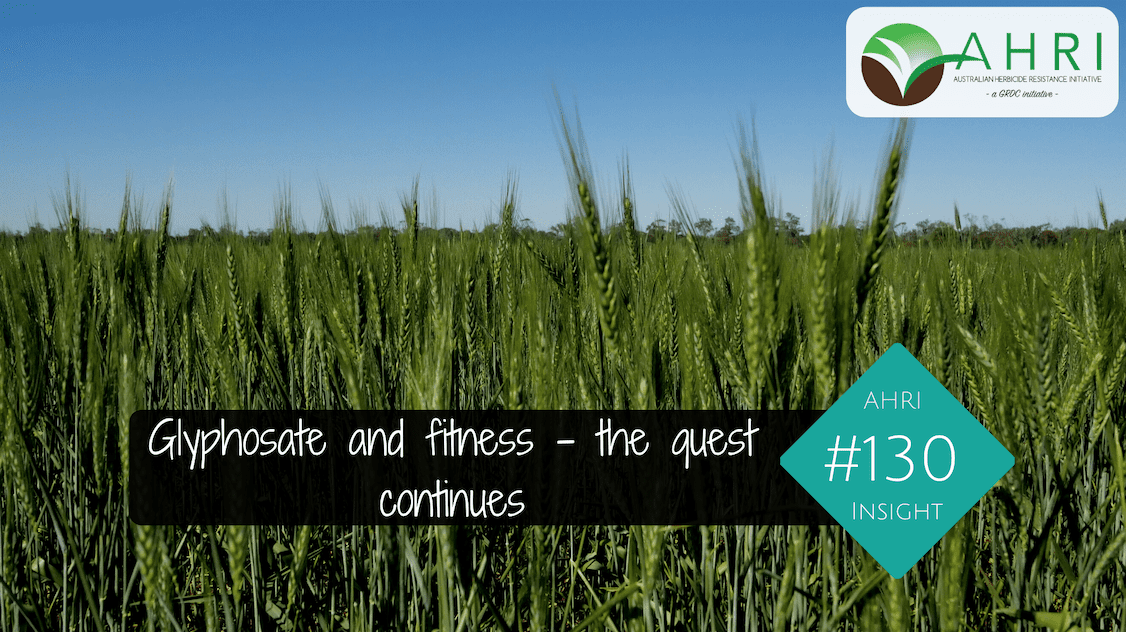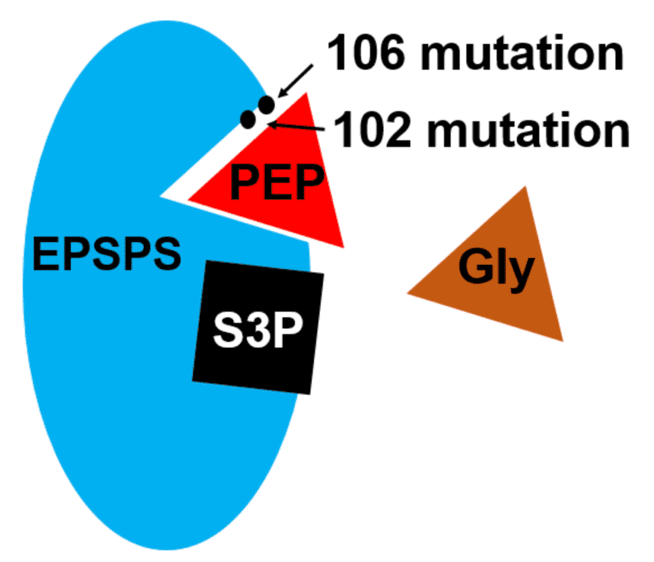FITNESS is a big thing amongst the Australian Herbicide Resistance Initiative (AHRI) communications team. We have bike riders, runners, walkers, a kite surfer, a netballer, a touch footy player – and there are only seven of us.
Fitness is also a big thing in the world of herbicide resistance.
Perhaps that’s why we’ve talked so much about herbicide resistance and fitness in past AHRI Insights. In particular, how certain types of glyphosate resistance result in a fitness penalty, where resistant plants are weaker and more susceptible to competition from other plants.
Unfortunately, not all types of glyphosate resistance impose a fitness penalty. A recent review by AHRI researchers concludes that plant populations with target-site mutations causing high levels of resistance are more likely to suffer a fitness penalty than those causing lower levels of resistance.
But the message is not so clear for glyphosate resistance resulting from gene amplification. Although it would make sense that the extra energy required to produce multiple target site enzymes would weaken the plant, this is not always the case.
Table 1 summarises the strength of resistance and fitness penalty associated with different glyphosate mechanisms. You can read more about these in the re-cap of past AHRI Insights below, or click on the review paper here by AHRI researchers Martin Vila-Aiub, Qin Yu and Steve Powles.
So why do we need to know if there is a fitness penalty? Well, if no glyphosate was applied for several years to a highly resistant population with a fitness penalty, it is possible the population could become more susceptible to glyphosate. But… it seems fitness penalties are rare, so unfortunately we believe glyphosate resistance is here to stay.
Table 1. Glyphosate resistance mechanisms – strength and fitness
A recap of target-site glyphosate resistance and fitness penalties:
Gene amplification – In AHRI Insight #11 we talked about glyphosate resistance resulting from gene amplification of the target enzyme EPSPS. This causes high levels of glyphosate resistance (6 to 40-fold) because the plant produces too much of the target enzyme for glyphosate to inhibit completely.
In AHRI Insight #31 we highlighted a study on palmer amaranth which showed no fitness penalty due to glyphosate resistance from gene amplification. However the review paper provided other examples of gene amplification that have resulted in both a fitness penalty and a fitness advantage.
Target site 106 mutation – In AHRI Insight #49 we talked about glyphosate resistance in awnless barnyard grass resulting from the Pro-106 mutation. This is a mutation at site 106 on the amino acid chain and is the most common glyphosate resistance mechanism. It results in low level resistance (2 to 3-fold) and has shown no fitness penalty.
Target site 102 mutation – In AHRI Insight #109 we talked about glyphosate resistance resulting from the Thr-102 mutation (mutation at site 102 only), found in tridax daisy. This mutation causes moderate glyphosate resistance (3-fold) but again there appears to be no fitness penalty.
Target site double mutation (TIPS) – In AHRI Insights #42 and #93 we talked about glyphosate resistance resulting from the TIPS mutation (target-site mutations 102 + 106). This causes very high levels of glyphosate resistance (>100-fold), with one population of Crowsfoot grass found to survive 57 L/ha glyphosate 450!
Is there a fitness penalty associated with the TIPS mutation?
Well yes…. and no.
If the resistant plants are homozygous for the TIPS mutation, ie. the TIPS mutation is present in both alleles of the gene, then they do suffer a fitness penalty. However if they only have one mutated allele of the gene (heterozygous) then the plants do not show a fitness penalty, even though they are still highly resistant!
Incidentally, AHRI Insight #42 contains an excellent summary and video of how glyphosate resistance works at the target site EPSPS enzyme (Figure 1) and is a great way to brush up on your molecular biology! In a nutshell:
EPSPS is a plant enzyme that plays an important role in the production of aromatic amino acids. It provides binding sites for the substrates PEP and S3P where they join to form EPSP, one of the building blocks of aromatic amino acids.
Glyphosate competes for the same binding site as PEP. If glyphosate binds instead of PEP, the process is disrupted and the plant dies. If there is a mutation at the binding site, glyphosate can’t fully bind and some level of resistance occurs, depending on where the mutation is located. The highest resistance occurs where there is a double mutation (TIPS) at the binding site, as shown in the figure below.
Figure 1: The 102 mutation occurs closer to the PEP binding site, right next to the 106 mutation. The combination of these two mutations (TIPS mutation) gives high level glyphosate resistance because glyphosate binding is severely inhibited. PEP can still bind but binding is slightly inhibited. This is why there is a fitness penalty associated with this mutation. (Source: AHRI Insight # 42 by Peter Newman)
Source: AHRI




HAVE YOUR SAY